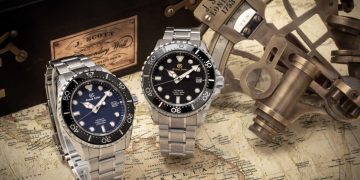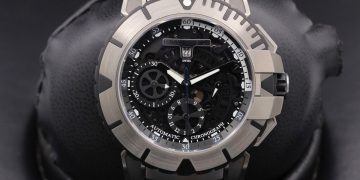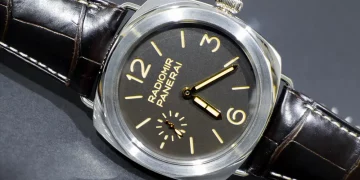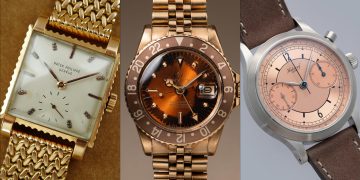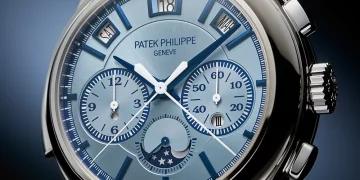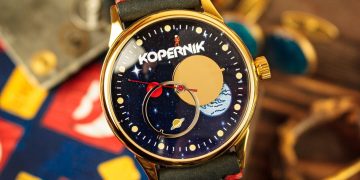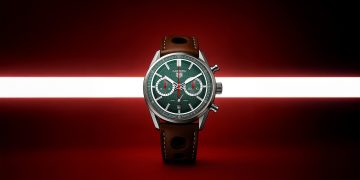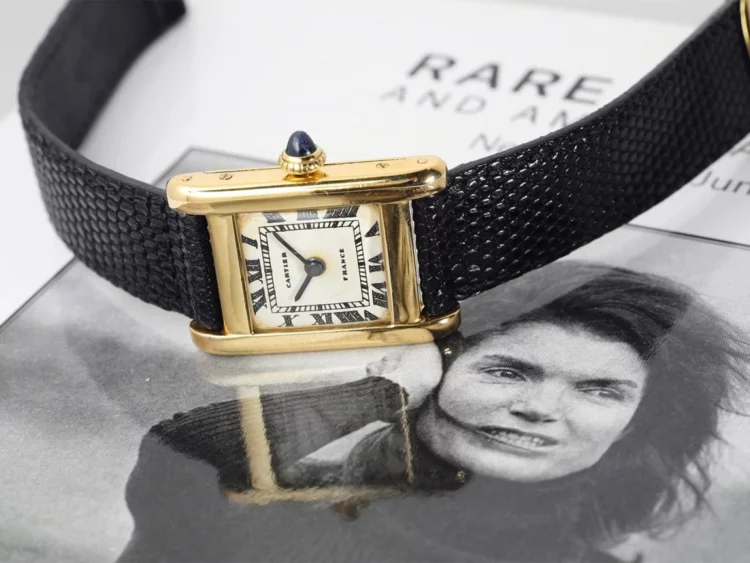The Cartier Tank, one of the most iconic timepieces in the history of horology, is much more than just a watch; it’s a symbol of elegance, defiance, and, surprisingly, survival. For over a century, the Tank has been worn by political figures, celebrities, and rebels alike—often outlasting the very regimes they represent. The longevity and cultural significance of the Cartier Tank are testament to its resilience, both as a luxury object and as a symbol of power, rebellion, and change.
This article explores how the Cartier Tank became a watch that transcended the political and social upheavals of the 20th century, how it has been adopted by figures on all sides of the ideological spectrum, and why it continues to thrive despite the fall of governments and the shifting tides of history.
The Birth of the Cartier Tank: A Watch for the Elite
The story of the Cartier Tank begins in 1917, during World War I, a time when the world was changing rapidly. Louis Cartier, heir to the prestigious French jewelry house Cartier, designed the Tank as a tribute to the military vehicles of the time. The design of the Tank watch was inspired by the angular shapes of tanks, which had just been introduced on the battlefield. The rectangular, clean lines of the Tank were revolutionary compared to the round watches that dominated the market.
Cartier’s vision was to create a watch that was not just functional but also a statement of refinement and modernity. The first Tank was introduced in 1919, and it quickly gained popularity among the elite of European society. Its distinctive design was an instant hit, appealing to those with an eye for elegance and sophistication. The Tank soon became synonymous with high society, and its wearers were often seen as people of power, influence, and wealth.
Tanks on the Wrist of Political Figures: A Symbol of Power
The Cartier Tank quickly became a watch favored by political leaders and aristocrats, and its association with power was cemented over the years. The watch was not only worn by royals and celebrities but also by some of the most influential political figures of the 20th century. Their ownership of the Tank transformed the watch from a symbol of luxury to one of influence, adding an almost mythical aura to its already distinguished design.
The Tank and General de Gaulle
Perhaps the most famous political figure to wear a Cartier Tank was Charles de Gaulle, the French military leader and president. De Gaulle was known for his unwavering resolve during the French resistance and his leadership in post-war France. His Cartier Tank, which he wore during key moments of French history, became a symbol of his leadership and personal strength. The Tank’s association with de Gaulle reinforced the idea that the watch was more than just an accessory; it was a tool of power and resilience in times of crisis.
The Tank and the Royals: Surviving Revolution
Throughout history, several royals have worn Cartier Tanks, adding to the watch’s connection with high status and power. One notable example is Princess Diana, who was frequently photographed wearing a Tank, often at public events. However, despite its association with royalty, the Tank also symbolized a more subtle form of rebellion.
During the tumultuous times of the French Revolution, King Louis XVI and his queen, Marie Antoinette, were not immune to the watch’s allure. The royals may have owned and worn Cartier products, but in the end, it was the watch’s symbolic connection to revolutionaries that made it particularly intriguing. While the monarchy crumbled and the revolutionists took over, the Cartier Tank survived as a reminder of the past—of the old aristocracy and their fall from grace.

The Tank in the World of Dictatorships
Throughout the 20th century, many dictators and political figures with authoritarian leanings chose to wear Cartier Tanks. A notable example is Yasser Arafat, the Palestinian political leader. His Tank watch was not just a fashion statement but also a symbol of his longevity and resistance against both internal and external pressures. His enduring image as a revolutionary leader was partly shaped by his association with the Tank, a watch that outlasted the political regimes he navigated.
In the Soviet Union, Leonid Brezhnev wore a Cartier Tank during his time as General Secretary. The watch, while never officially a symbol of the Communist regime, was seen as a luxury item that stood in contrast to the austerity of the Soviet system. It became an ironic symbol of the contradictions of power, as the watch’s elegance and status conflicted with the ideal of proletarian simplicity.
The Tank as a Watch for Rebellion
Despite being a symbol of aristocracy and power, the Cartier Tank also became an emblem of rebellion. The watch was not simply worn by those in power; it was adopted by a variety of political figures who opposed or challenged the establishment. The Tank’s appeal to revolutionaries was partly due to its elegant simplicity—it was a luxury watch that didn’t shout its wealth but rather conveyed it in a more understated manner.
The Tank and Fidel Castro
One of the most surprising figures to wear a Cartier Tank was Fidel Castro, the Cuban revolutionary leader and communist dictator. Castro’s Tank, which he wore during his rise to power and throughout his long rule in Cuba, became a symbol of the complex relationship between luxury and rebellion. Castro, who led a communist revolution, was not the typical watch consumer. Yet, his Cartier Tank was seen as a statement of defiance, representing the survival of the past and the contradictions of the Cuban Revolution.
The Cartier Tank’s ability to transcend political ideologies made it an appealing choice for such figures. Castro’s Tank was often viewed as a symbol of the “old guard,” an object that carried the weight of history and revolution, and yet remained remarkably modern.
The Tank as a Symbol of Rebellion in Hollywood
While the Cartier Tank was closely associated with political figures, it also found a home among those in the entertainment industry who used it to make bold statements. Steve McQueen, the “King of Cool” and the iconic American actor, famously wore a Cartier Tank during his time as a cultural symbol of rebellion. McQueen, known for his roles in films like The Great Escape and Bullitt, used the Tank to further his image as a man who defied conventions.
Tanks Outlasting Regimes: The Watch that Survives
What makes the Cartier Tank truly remarkable is its ability to transcend political systems, ideological divides, and even the passage of time. While dictatorships, monarchies, and revolutions may come and go, the Cartier Tank remains. Its enduring presence through every regime change is a testament to its timeless design and its role as a symbol of defiance and power.
The Tank and Modern Political Figures
In the modern era, the Cartier Tank continues to be worn by political leaders and influential figures. Boris Yeltsin, the first President of Russia after the collapse of the Soviet Union, was often seen wearing a Tank, symbolizing the transition from one regime to another. The watch’s ability to adapt to changing times—while retaining its aura of power and elegance—keeps it relevant even today.
The Tank’s legacy lives on in contemporary politics, where it has become an emblem of both authority and subtle rebellion. Its place in history as a symbol of resilience is unparalleled, as it endures in the hands of those who challenge the status quo.
The Cultural Legacy of the Cartier Tank
The Cartier Tank is more than just a timepiece; it’s a cultural artifact that encapsulates the intersection of power, luxury, and defiance. Its ability to transcend political boundaries and survive through the rise and fall of regimes makes it one of the most enduring symbols in the world of horology.
From kings to rebels, from royals to revolutionaries, the Cartier Tank has left an indelible mark on history. It’s not just a watch—it’s a statement, a story, and a legacy that continues to evolve as new generations of political figures and cultural icons adopt it.
Conclusion: A Timeless Symbol of Power and Rebellion
The Cartier Tank has proven time and time again that it can withstand the changing tides of history. Whether worn by a dictator or a revolutionary, a king or a rebel, the Cartier Tank remains an enduring symbol of luxury, resilience, and defiance. It has outlived regimes, survived revolutions, and continues to shine as a watch for those who shape the world.
With its unique combination of elegance, history, and symbolism, the Cartier Tank will likely continue to serve as a silent witness to the shifting currents of power and rebellion for many years to come. Its legacy is secured, and it will continue to be a watch that transcends time and political boundaries.


